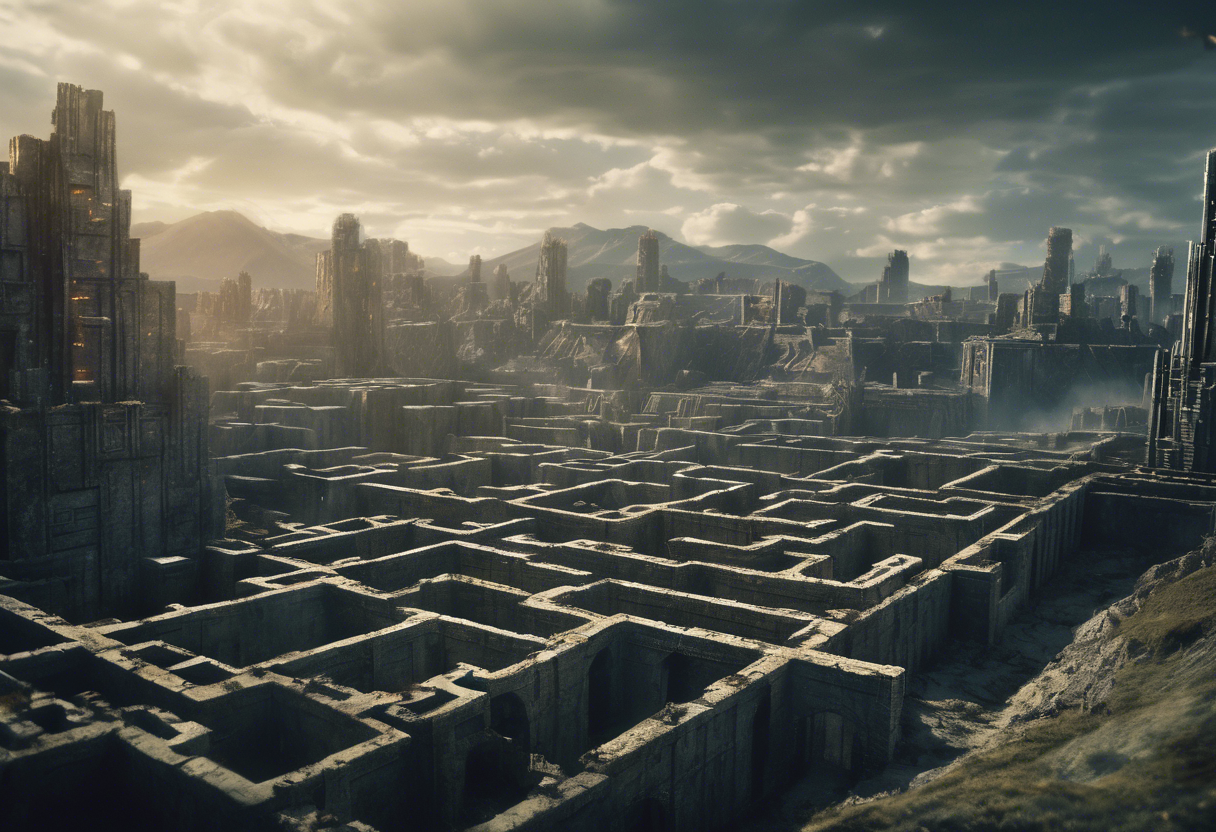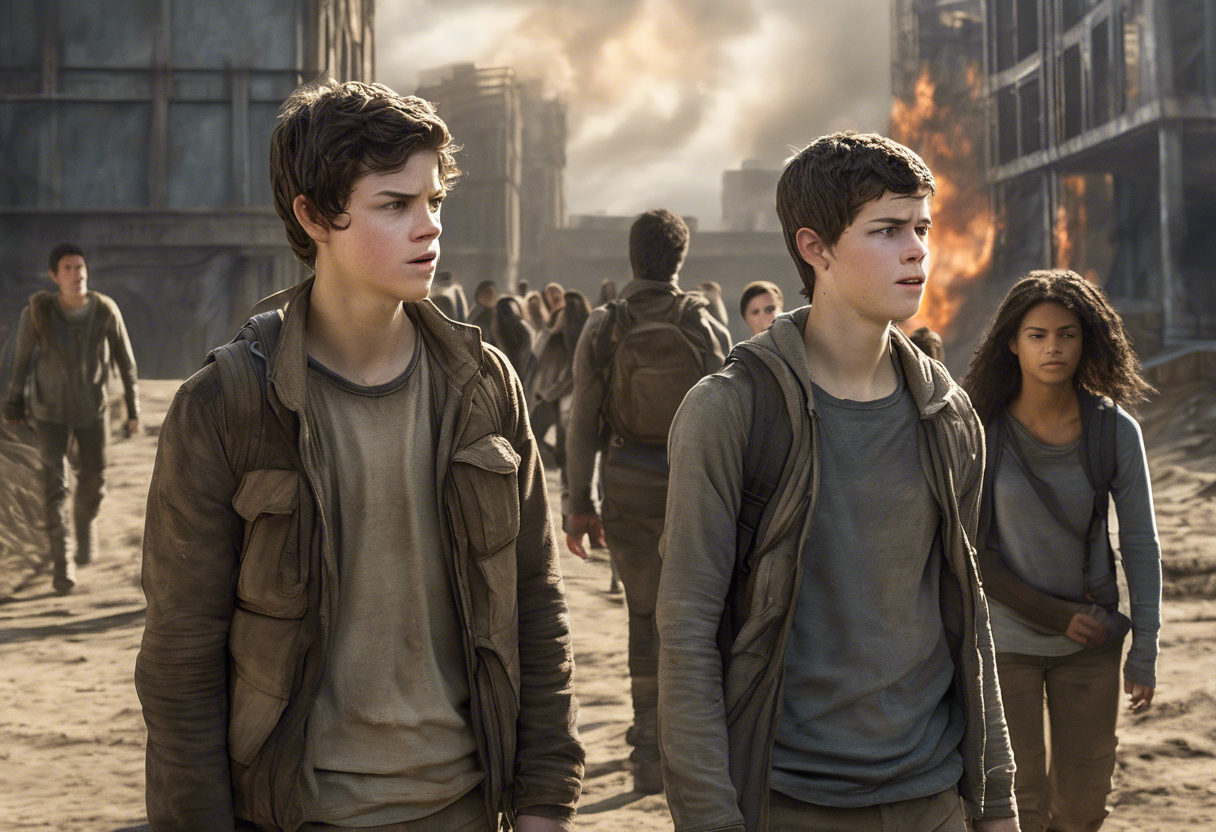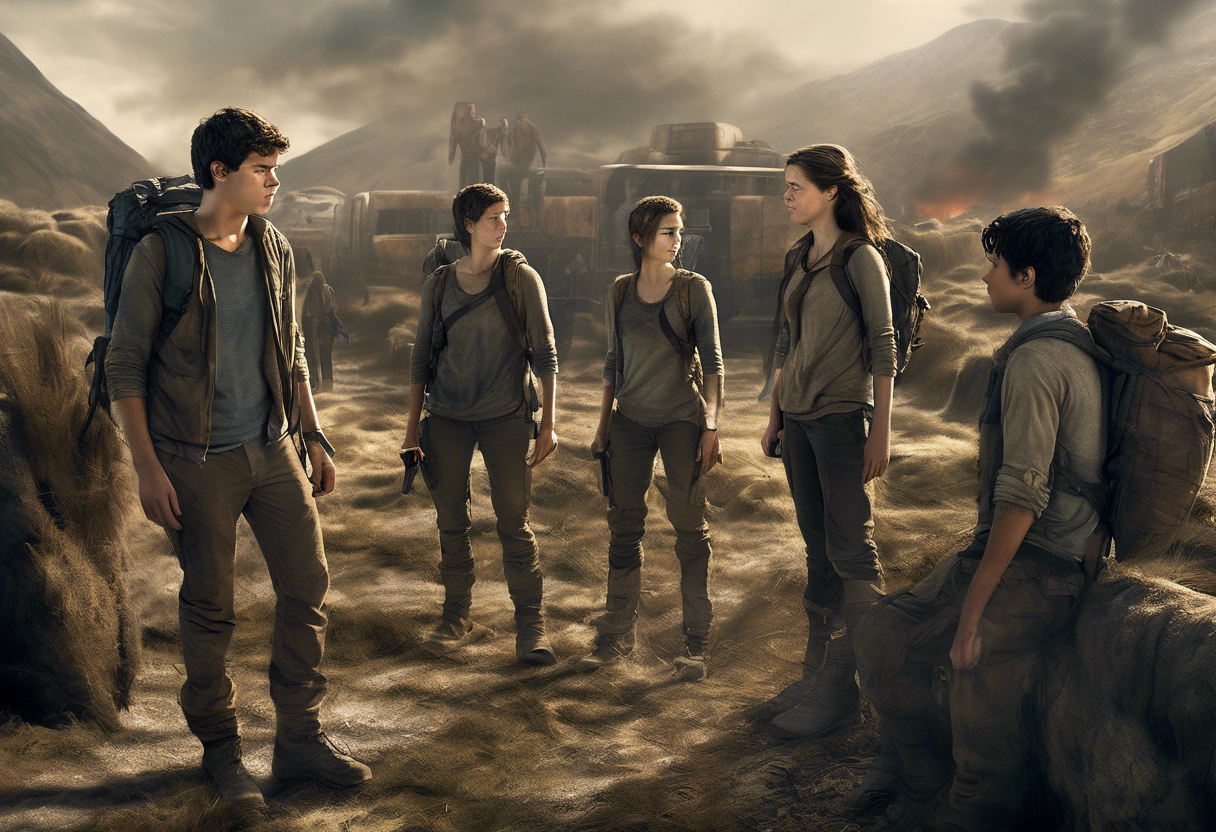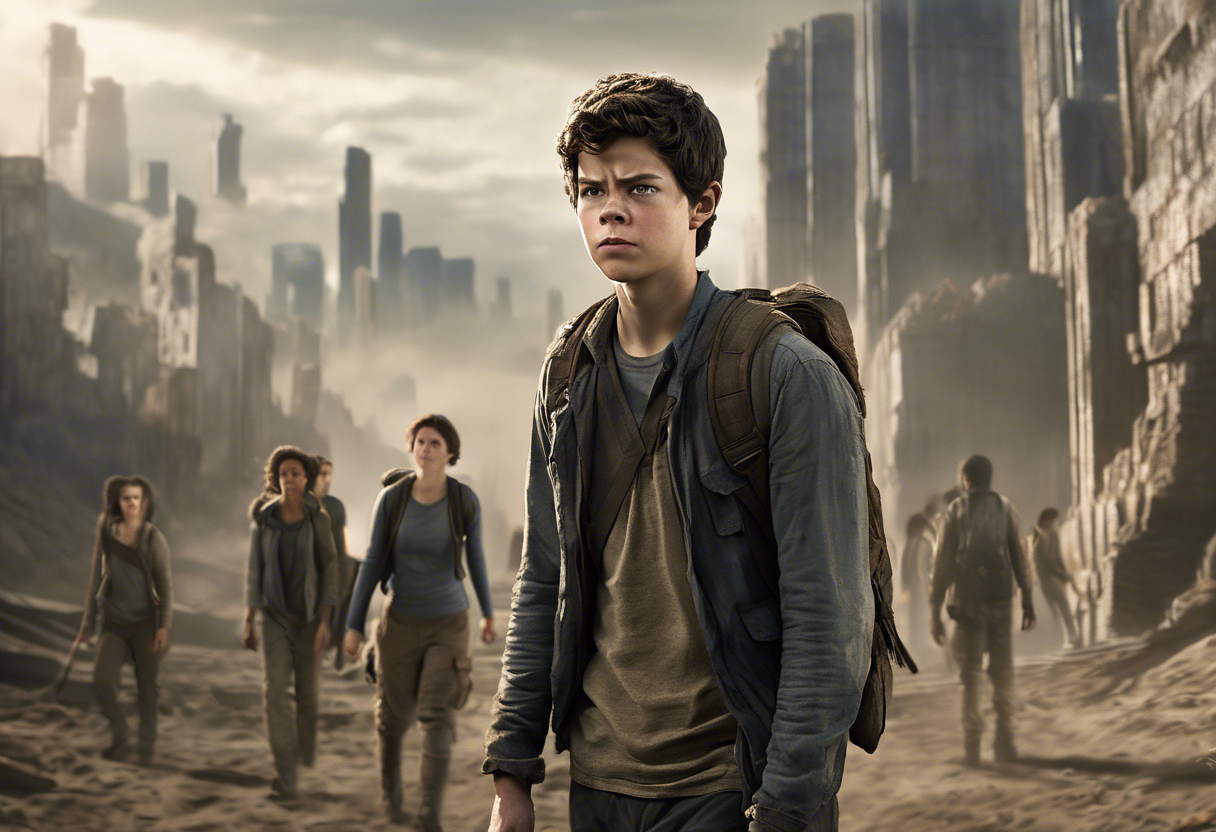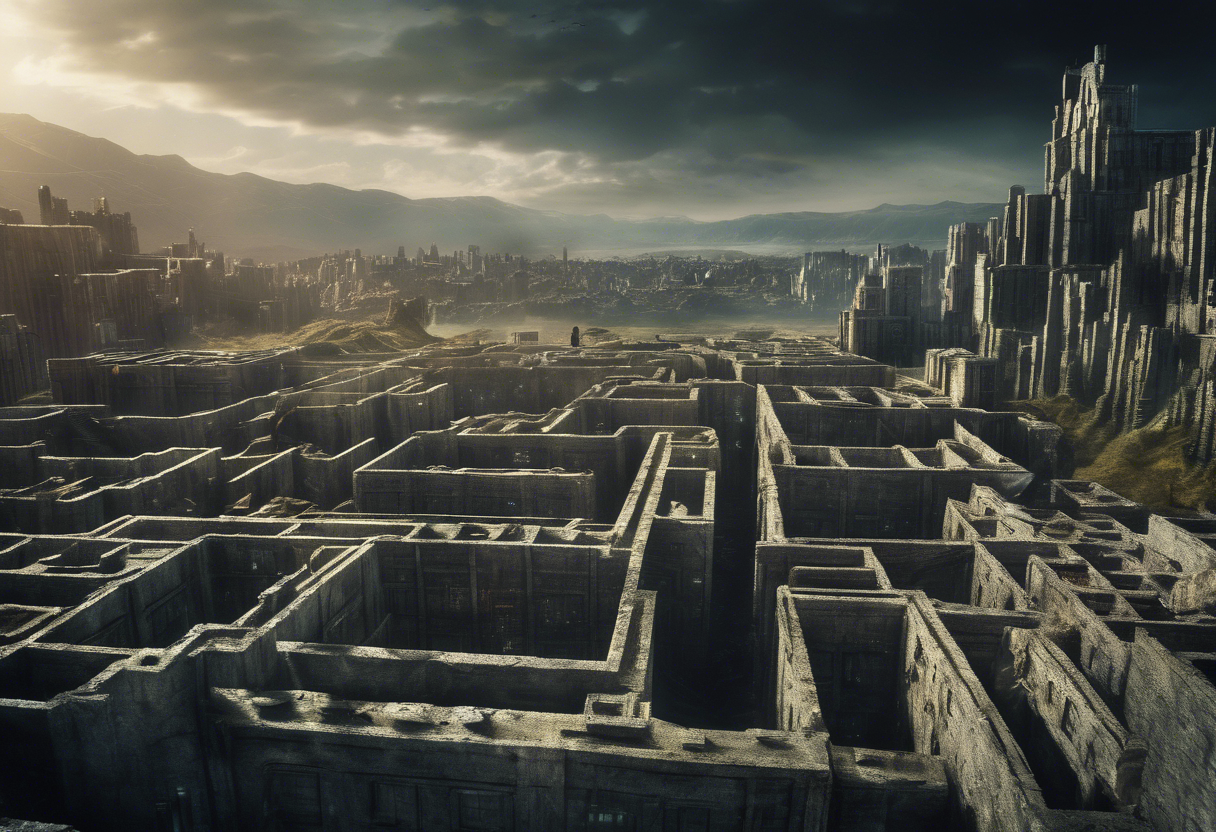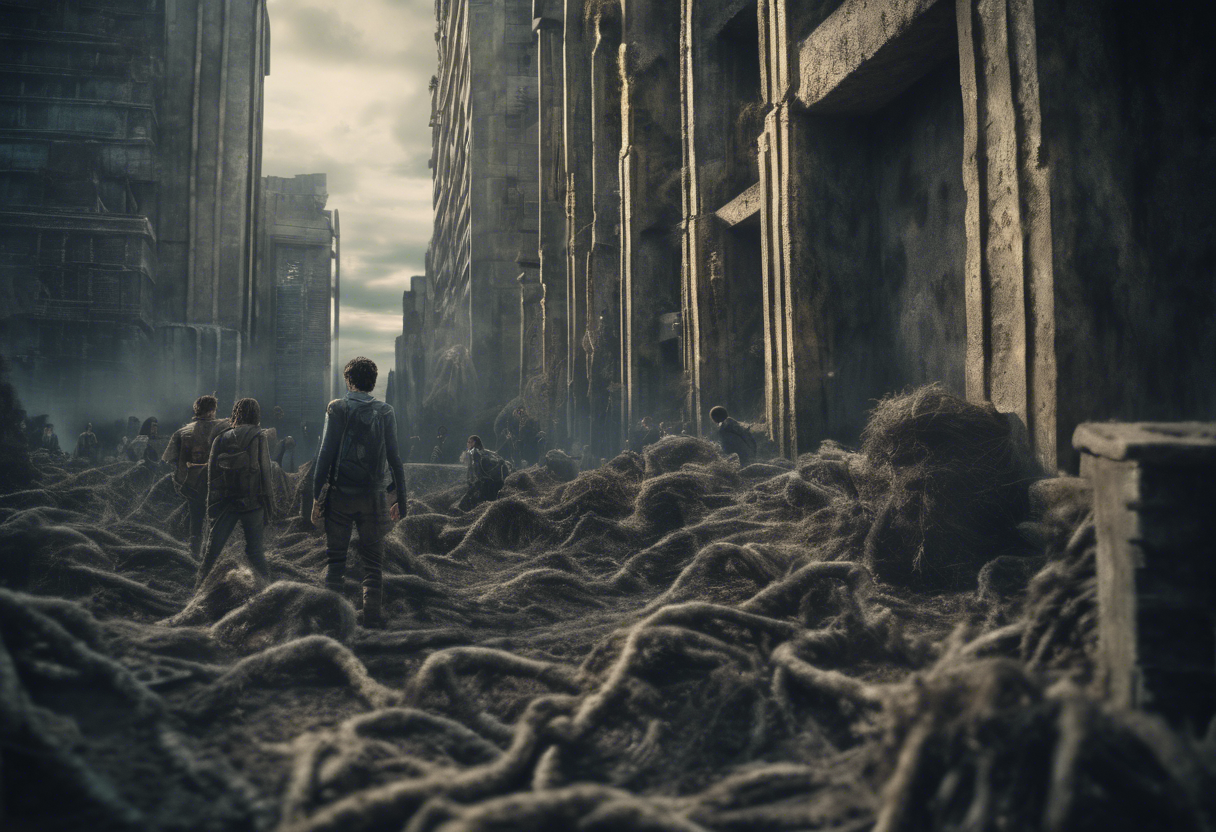Contents
Maze Runner: The Death Cure
Introduction
Maze Runner: The Death Cure, released in 2018, is the final installment of the Maze Runner film series, a young adult dystopian science fiction franchise based on the novels by James Dashner. Directed by Wes Ball and written by T.S. Nowlin, the film is a culmination of the epic journey of Thomas and his fellow Gladers as they navigate a post-apocalyptic world ravaged by the deadly Flare virus.
The film was produced by Ellen Goldsmith-Vein, Wyck Godfrey, Marty Adelstein, Lee Stollman, and Joe Hartwick Jr., and distributed by 20th Century Fox. Initially scheduled for release on February 17, 2017, the film’s release was delayed to January 26, 2018, to allow star Dylan O’Brien to recover from injuries sustained during filming[5][4].
Maze Runner: The Death Cure stands out within its genre for its intense action sequences, compelling narrative, and the emotional depth of its characters. The film series, which began with The Maze Runner in 2014, has evolved from a mysterious maze-centric plot to a broader exploration of survival, rebellion, and the human condition in a dystopian world.
Plot Summary
The film picks up where Maze Runner: The Scorch Trials left off, with Thomas (Dylan O’Brien), Newt (Thomas Brodie-Sangster), and Frypan (Dexter Darden) as the last of the free Gladers who are immune to the Flare virus. They join forces with the Right Arm resistance to rescue other Immunes from a train operated by WCKD, an organization notorious for capturing and experimenting on immune children.
Upon discovering that their friend Minho (Ki Hong Lee) is being transported to the Last City, WCKD’s heavily fortified base of operations, Thomas, Newt, and Frypan defy the orders of Vince (Barry Pepper), the leader of the Right Arm, to embark on a perilous rescue mission. Along the way, they are attacked by Cranks, humans infected with the Flare, but are saved by Jorge (Giancarlo Esposito) and Brenda (Rosa Salazar), who join their quest[1][5].
The group reaches the Last City, where they encounter a wall that separates the safe haven from the infected outside. With the help of Gally (Will Poulter), who has survived his previous encounter with Minho, and Lawrence (Walton Goggins), a rebellion leader, they infiltrate the city. Inside, they face numerous challenges, including WCKD’s relentless pursuit and the internal conflict of Newt’s infection with the Flare virus.
As the story unfolds, Thomas and his friends must navigate the complexities of WCKD’s operations, including the manipulation of Teresa (Kaya Scodelario), who is torn between her loyalty to WCKD and her friendship with Thomas. The climax of the film involves a dramatic rescue mission, a rebellion against WCKD, and a heart-wrenching conclusion that sees the characters making ultimate sacrifices to secure a future for the Immunes[1][5].
Themes and Symbolism
Maze Runner: The Death Cure delves into several profound themes that enrich its narrative and resonate deeply with audiences. One of the central themes is the struggle for freedom and autonomy in a world controlled by oppressive forces. Thomas and his friends embody the spirit of rebellion, constantly challenging the authority of WCKD and seeking to uncover the truth about their past and the true intentions of their captors[3].
The film also explores the theme of sacrifice and loyalty. Characters like Newt and Teresa make ultimate sacrifices for the greater good, highlighting the depth of their friendships and the moral dilemmas they face in a world where survival is a daily struggle. The symbolic act of Newt’s self-sacrifice, where he begs Thomas to end his life to prevent further suffering, is a poignant example of this theme[1][5].
Symbolism plays a significant role in the film, particularly with the Last City, which represents both a safe haven and a prison. The city’s wall, which separates the immune from the infected, symbolizes the barriers and divisions that society often creates. The use of knives and guns as motifs also underscores the desperation and violence that pervade the world of the film, highlighting the close-range, personal nature of the conflicts and the emotional toll they take on the characters[3].
Cultural Impact
Maze Runner: The Death Cure had a significant cultural impact upon its release. As the final installment of the Maze Runner series, it brought closure to a narrative that had captivated audiences worldwide. The film’s action-packed sequences, coupled with its emotional depth, made it a favorite among fans of the young adult dystopian genre.
The film grossed over $288 million worldwide, indicating its commercial success and the enduring popularity of the franchise[5]. The series as a whole has influenced popular culture, with its themes of rebellion and survival resonating in other media, including literature and television.
Critical Reception
Maze Runner: The Death Cure received mixed reviews from critics. While many praised the film’s action sequences, visual effects, and the performances of the cast, others criticized the storyline, screenplay, and character development. Critics noted that the film’s pacing was well-balanced, keeping the audience engaged through its various cliffhangers and intense action scenes[5][4].
Audiences generally responded positively to the film, appreciating the conclusion of the series and the emotional resolution of the characters’ arcs. However, some viewers felt that the film did not fully live up to the standards set by its predecessors, particularly in terms of plot coherence and character development.
Legacy
Maze Runner: The Death Cure has left a lasting legacy in the world of young adult dystopian fiction. The film series, as a whole, has inspired a new generation of filmmakers and writers, influencing the genre with its unique blend of mystery, action, and emotional depth.
The series’ impact on cinematic history is evident in its contribution to the evolution of the dystopian genre. Films like The Hunger Games and Divergent series have also explored similar themes of rebellion and survival, but Maze Runner stands out for its intricate plot and the personal journeys of its characters.
In conclusion, Maze Runner: The Death Cure is a fitting finale to a series that has captivated audiences with its compelling narrative, memorable characters, and thought-provoking themes. Its legacy continues to inspire and engage audiences, solidifying its place as a significant work in the dystopian science fiction genre.

